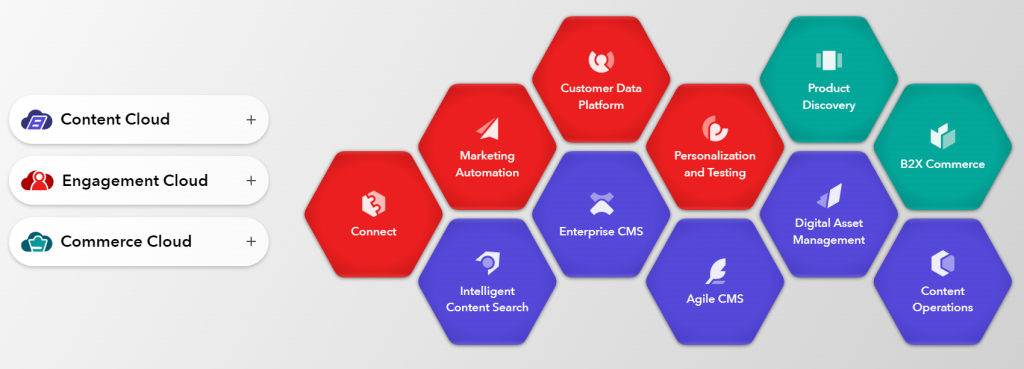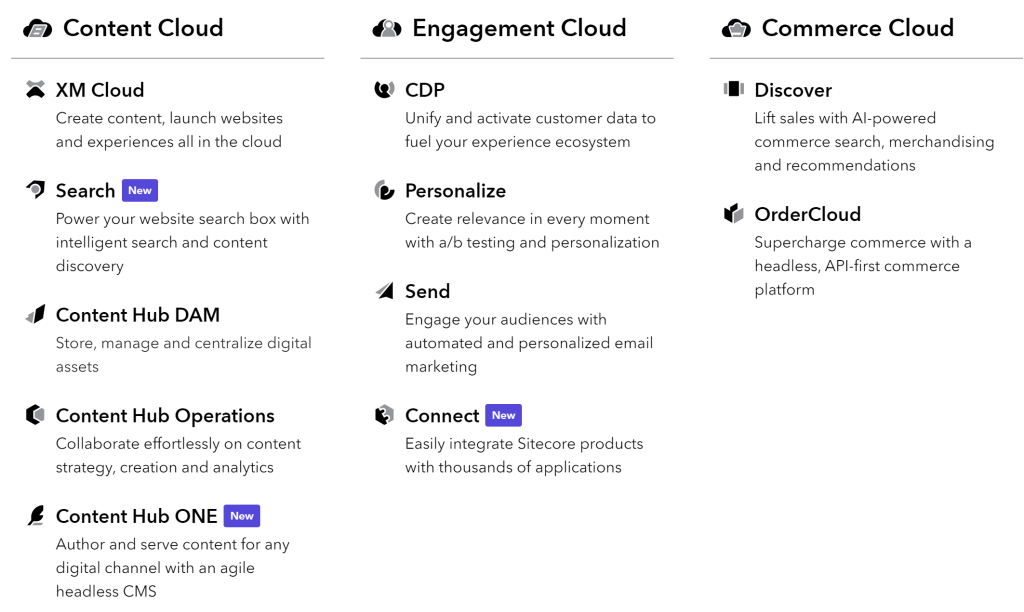Sitecore: Headless, Headless, Headless
I writing this post after returning from SUGCON Malaga, and after 5 years without writing any post and it turns out my last blog entry was also about attending an SUGCON.
It was February ’18, the era of Sitecore 9 and XdB, and now it is 2023, the era of the headless Sitecoverse. It’s amazing how much things have changed, back then I highlighted 6 key points, let’s see where they stand today:
1- XdB as the foundation for all marketing / personalization capabilities
XdB is dead so are these foundations. Sitecore has changed their mind completely, no more XdB, not all its capabilities are provided by a different SaaS product(s), who knows, maybe behind the scenes the good old XdB database and foundations are still there, but since it is now a SaaS we won’t see it.
2- Reducing time to market with SxA
We still have SxA!!! Yes, this idea has lasted long enough to make it to Sitecore 10.3 and XM Cloud (although a very limited version of SxA with only a few headless components)
3- Opening the API to third parties
Back then it was “just” about rest API and using standards and microservice; Yes, those microservices and APIs are gone, but to be fare, it could be the first steps towards this new world of API and interconnectable modules.
4- One platform to manage them all
This one makes me smile. How wrong was I or how much Sitecore has changed their mind…
I still remember the arguments about having one platform capable of delivering , content, media, marketing activities, commerce, email campaigns, etc. all natively integrated, all seamlessly tracking data with the same platform, all taking decisions based on all that data…
Now we are in the opposite world. A lot of smaller products, independent of each other, all became SaaS, all new products with less functionality, with fewer customizations points, now we are in the Sitecoreverse era… Will ill last?, will it succeed? Will it be better for our clients? Will it be better for developers? Time will tell…
5- Let’s make it clever
5 years Sitecore was already selling the idea of automate marketing with AI with his new product Sitecore Cortex. While it is still in 10.3, it’s difficult to find questions, blog post or use cases about it.
Now (most of) all the marketing personalization capabilities have been moved to the CDP and it seems there is AI there. Is it powered by Cortex? is it something else? We’ll figure it out…
6- New tools
Sitecore promised Zenith and Horizon: While horizon did see the light and has been available for several versions, it never get track, or become popular and now has been replaced by “Pages”, the new UI for editing content in the CM (yes, technically based on Horizon)
So, the summary, Sitecore didn’t deliver that promise they made 5 years ago, instead they have delivered something else. Is it better than what they promised? Will they deliver this one? Will it last? I don’t know yet.
After this long introduction, let’s go to the point, what did I get home from SUGCON 2023?
Soo many new things
I went there trying to make sense about all these new products as I felt I was losing track and couldn’t make sense of most of them and turns out I’m not the only one.


It was clear to me that it was not me, but a generic issue for Sitecore, when the only note I took about opening note was “Sitecore is going to slow down its peace of new products and features and focus on explaining why and how to use them.” (Yes, there were other “how great we are”, “we are better than others”, but I tend to ignore all these marketing propaganda.
A lot of new toys but… new functionality?
Not really… most of those products are tools existing in Sitecore, like:
- Send replaces ExM
- CDP and personalize replace the Xdb capabilities
- OrderCloud replaces the several attemps Sitecore did to try to get an eCommerce platform
- Search replaces Content Search
- …
At least you’d expect that the products would deliver the same level of maturity but… you are wrong, these are new products and do not deliver (hopefully just yet) the same level of functionality.
So is it one or two steps back? Yes it is. It is even reflected by Gartner in their magic quadrants reports, where Sitecore, while still being being one of the top players, has been overtaken by competitors.
But to be fair, based in Sitecore’s vision of the future, it was a necessary step to re-architecture the platform, instead of keeping refactoring the old code.

It is obvious Sitecore has gone headless; it is obvious Vercel has a great platform to support it, but it was not obvious to me to what point these 2 brands have become partners. Sitecore has replaced Microsoft Azure completely (They still use it, but 2 of their main products, Managed cloud and XM Cloud hide it, and Sitecore gets the profits of the cloud usage directly) by Vercel, and while they still make the mandatory comments “Vercel is not mandatory”, almost every single example by Sitecore and other speakers used Vercel. Is it time to learn about it? I guess so…
Everything is headless already? are we late to join the party?
How many of our clients are on Sitecore 10.3? No that many? Sitecore 10 maybe? How many of them are using PaaS?
Sitecore 10 was released almost 3 years ago and Sitecore 9 5 years and we are still doing a lot of work on those products.
Many clients are not comfortable yet with PaaS, due to the lock of control, so convincing them to go straight to SaaS + Edge computing is not going to be easy.
May point is, the party has just started. Don’t panic. Sitecore (and other companies) like to seel their vision as a fact that is already present, even when they don’t even their own products available.
Also, Sitecore is still releasing a 10.4 version of Sitecore XP (Who knows when) for those the traditional/conservative clients (And also I would say for alllllll those clients that don’t need a headless solution). Somehow it seems like Sitecore wants to say without saying this could be the latest version of Sitecore. Are they just “testing the waters”? Would they be so bold? I can’t tell but for sure, keeping all these new products + XM = XP would be hard. What do you think will happen?
Ok, so can I sit back and relax?
No way, I’m afraid if we ant to stay relevant we must be proficient on the new tools, even if it is to discard them many times, but get it right when we have to use them.
There are some companies already doing “rescue projects”, were clients have a bad implementation of these solution (all we have seen Sitecore projects were it was obvious whoever built it had no idea about Sitecore), and we don’t want to be caught in this situation.
What is left in the traditional Sitecore ?
The content editor.
This is an oversimplification, but it is a good way of getting the idea. You get an already working Content editor on the cloud, but don’t be fooled thinking you don’t have to pay for the cloud, it is just already included in the price.
And to be clear, it means we don’t get Content Deliveries, not even experience editor.
On the “new architecture”, (It makes me remember my work migrating from an OLD CMS, which basically generated static html pages…and still some think this is a great new idea…) there is no dynamic rendering of the pages (Hold your horses, I know, I know…). We build static html+javaScript components and these get the from the CMS’ API, (that’s why they are so quick) so now we have to a find somewhere to put them (Don’t worry, there are plenty of options, actually too many)
Again, don’t you think you can put your your “components” in the CM and get Experience editor working. First simply because it doesn’t work that way, now you need to use a editing host, and second because now you “want to use pages”, which is the new WYSIWYG.
All it is worth if I don’t have to ever do a Sitecore upgrade anymore
Sitecore CMS has gone SaaS. Great, Software as a Service. It means we are promised with easy updates, which makes everybody happy, (We know what it means to “upgrade Sitecore”), until we hear: Updates will be transparent for customer without breaking changes (Hurray), but (A very big but), Upgrades will introduce breaking changes, and will be coordinated with clients, forcing them to upgrade, meaning: Same old problems but since know we do not control the platform Sitecore will set the peace, instead of the customer’s agenda.
But at least we still have SxA (Headless), right?
Yes, we do… Since XM cloud is headless, Sitecore has to port all the old SxA components to headless components, and guess what? they didn’t. Add to that the fact that content search is also gone so the search driven components of SxA are also gone. Result: SxA only provides a limited set of components now.
Wait, Sitecore offering an alternative CMS? Are they crazy?
Yes, they do, now we have “Content hub”, which is the “cheap cms alternative”. We have to be clear, it doesn’t even play in the same league as Sicore XM or XP. How many clients have complained to you, how difficult it is to use Sitecore? How many feature is has that doesn’t make sense to them and just make things difficult? Well, now they have this option, were they can just to basic editing and store basic information in a flat data model, where even the page layouts will be statics and won’t be manageable.
You want a simple CMS to store simple data and build a FE application? go for Content hub? YOu want to go big? Go for XM Cloud.
Again, I’m oversimplifying here
